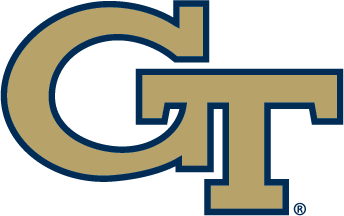BILL BALLEW, Total Sports Correspondent
They sit at the end of the bench during games and lead the cheers for their teammates. Their job is not a glamorous one, nor one that many could or would like to have. And while the occasional catcall from places such as Cameron Indoor Stadium comes with the territory, there are worse ways to spend four or five years than as a walk-on in a major college basketball program.
Just ask Todd Harlicka. During the first half of the 1990s, the former guard attended every practice and pushed himself to stay in peak physical condition throughout the offseason, all while balancing the responsibilities of playing on the Georgia Tech basketball team and obtaining his bachelor’s degree in management. He even found enough time to earn a master’s degree in economics, work he started during his final year on the hardwood.
The reward for his efforts? Well, other than two prestigious college degrees that led to a well-paying job in Atlanta, Harlicka played in 45 games, totaling 116 minutes, almost all during the waning moments of blowouts. He scored 29 points, including 17 as a senior, and handed out eight assists. The 6-foot-2 guard also had one of the best seats in the house for an ACC Championship, two trips to the NCAA Tournament and one visit to the NIT.
“I think when I first started out, I was hoping for a little more playing time,” said Harlicka, who last played for the Yellow Jackets in the 1994-95 campaign. “But at the same time, I never realized what doors would be open just by my being on the team. When you play at Georgia Tech, you have so many contacts in the business world.”
Harlicka’s career is not unlike those of three or so players on every major college basketball team. They are walk-ons, similar to extras in a movie. Sometimes they wind up catching lightning in a bottle, such as when Harlicka was named one of the three senior captains by his teammates during his final season. But more often than not, their role and subsequent contributions are judged in more esoteric ways.
“My biggest contribution to the team was getting everybody ready in practice,” said Harlicka, whose father, Skip, played at South Carolina in the late 1960s and was a first-round draft pick of the Atlanta Hawks. “When we were preparing for an opponent, I took on the characteristics of the player I was trying to be. I didn’t really play my game; I tried to play their game.”
Therefore, if the Yellow Jackets were drafting plans to play North Carolina, Harlicka tried to emulate the game of former Tar Heel point guard Jeff McInnis. In practice prior to contests against Duke, he mirrored the offensive and defensive traits of Jeff Capel. That work also enabled the walk-on to spot tendencies during the games and mention those to the Tech coaching staff.
Yet the question that begs to be asked is, why didn’t Harlicka attend a smaller school where he could have played on a regular basis? And after his collegiate career concluded, did he have any regrets? Harlicka echoes the sentiments of others in his place by answering the second inquiry with a resounding “No!”
“I wrote off the Division II and III schools because I thought I could play intramurals at a big school and it would be the same thing,” said Harlicka, who opted to pay his way at Tech after turning down several scholarships at the small-conference level. “I wanted to see what kind of player I could become. The only way you find out about yourself is by playing against the best. And I certainly had that.
“My first year, I played every day in practice against Kenny Anderson, and the last four years it was Travis Best. You can’t ask for better competition than that in practice. And I think it probably made me the best basketball player I could become.”
Not that there weren’t some growing pains along the way. Harlicka remembers when he first arrived in Atlanta after graduating from Notre Dame High School in Lawrenceville, N.J. He was forced to match talents with Anderson, who was a sophomore and on his way to the professional ranks.
“When I got to Tech, I was in over my head,” Harlicka said. “I probably wasn’t ready to play, at least not at that level. It was tough to feel like I was a part of things. But that changed by my final year. I became a captain, which I certainly didn’t expect. And I saw my game improve. I think if I would have gone to a smaller school, even though I may have played a little more, I don’t think I would have become as good of a basketball player.”
In looking back on his college career, Harlicka believes that being a walk-on requires a certain makeup. Given the competitive drive found in every successful athlete, many players become frustrated with the lack of significant playing time. They begin to question their contributions, and allow their dedication to dwindle over the course of the long season.
Harlicka says he battled those problems, but believes that his perseverance produced significant returns when the big picture is considered. After all, he used his five years as a Yellow Jacket as a springboard for the rest of his life.
“It was difficult at times,” Harlicka said, “but I wouldn’t go back and change a thing.”









